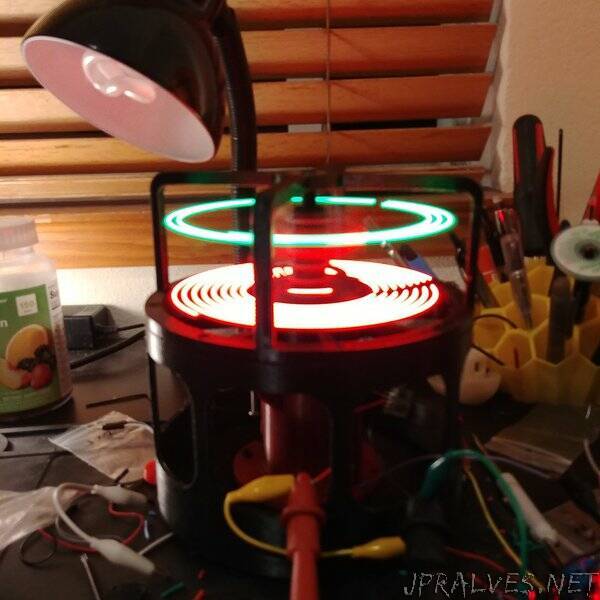
“A 3D rotational persistence of vision display
DESCRIPTION
A previous project of mine was a 6x6x6 led cube, and while I was pretty happy with the way it came out, I thought a display with more resolution would be cooler. However, the exponential increase in effort required to construct a larger in constructing a larger LED cube put me off on the idea.
Making a rotational display like this seemed like a good way of getting the extra resolution I wanted, without having to spend lots of effort soldering hundreds of leds. So it felt like a good project to take on.
If I can iron out all the bugs with the design, I’d really like to streamline the overall design to make it easier to produce. As a longer term goal for the project, I really like the idea of making a kitable version of this.
DETAILS
- The effective display area is 60x8x6 “pixels”
- The display uses apa102-2020 addressable LEDs. There are 8 LEDs on each of the 6 blades used to make the display area.
- I’m using an atsamd21g18 microcontroller to drive the LEDs and run all the animations. I had originally started with an atmega328p while I was prototyping, but it wasn’t fast enough to keep up as I scaled up to the final design. The microcontroller and control board both rotate along with the LED boards.
- A hall effect sensor on the control board is used with a magnet mounted to the enclosure to measure the rotational speed of the display, and used as a point of reference to stabilize the image being displayed.
- Inductive coils are used to transfer power from the stationary base to the rotating LEDs and control board. I used these ones from adafruit: https://www.adafruit.com/product/1407
- I’m using an arduino nano, with a simple motor driver to control the brushed motor that spins the display. I’m currently just using a potentiometer to set the speed of the motor
The code is still very much a work in progress, but it can be found here:
https://github.com/Jamal-Ra-Davis/pov_display”
